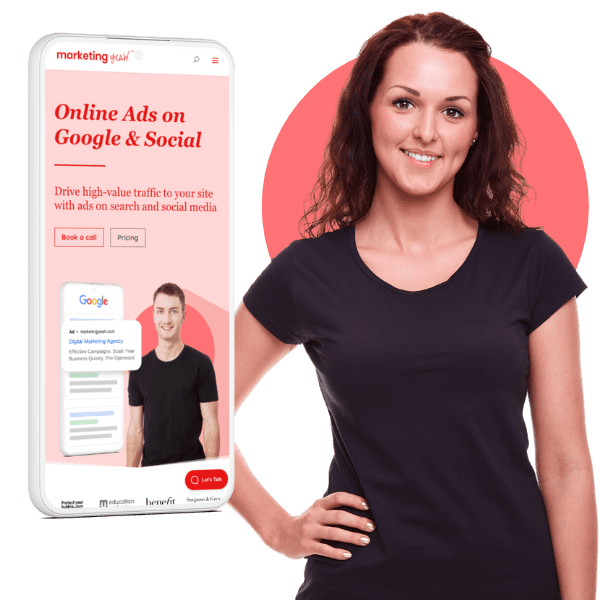In this series, we take a look at how startup brands made it big.
We deep dive into some of the brands that inspire us and the marketing strategies they used to scale up.
This week it’s Glossier, the New York-based beauty company that hit a valuation of over $1bn in under a decade.
Glossier started in 2014 as an offshoot of Emily Weiss’ blog Into the Gloss, which Emily started while she was still working as a fashion assistant at US Vogue.
In an industry saturated with beauty gurus sporting bold makeup looks, Glossier carved out a niche for pared-back beauty.
Much of its icon status derives from aesthetically-pleasing and instantly recognisable branding that resonates with its Millennial and Gen Z base: blush pink, minimalist packaging and the fresh, dewy skin that pervades its social channels.
Glossier knows how to use social media.
Over the past decade it has amassed impressive followings across social media, including an Instagram following of 2.6m in 2022.
While Glossier has struggled to maintain its focus recently, it still remains a strong business and a shining example of how an obsessive focus on your customer can lead to extraordinary results.
Here are some marketing lessons we’ve taken away from the Glossier story:
1. Listen to your customer – no, really listen to your customer
We all say we listen to our customers, right?
But how many of us really listen.
Glossier has a borderline obsession with listening to customers.
As COO Henry Davis explained at Cannes Lions:
Customer is at the heart of product development, customer is at the heart of strategy and customer is at the heart of the sale.
This laser focus has enabled them to clearly understand who their customers are, what they want and where and how they can engage with them.
As a DTC brand, Glossier owns every part of its relationship with the customer and customer data.
This gives them a unique opportunity to get to know customers at early stages of the funnel.
Glossier recognises that if there’s one thing that won’t encourage customers to convert, it’s sales-heavy messages at the awareness stage of the funnel.
Much of their content, digital or otherwise, focuses on delighting their community rather than selling to them and allowing customers to progress through the customer journey at their own pace.
2. Incentivise user generated content
User generated content (UGC) is not new, but the extent to which Glossier has been able to encourage their followers to share online is impressive.
Glossier noted that customers habitually photographed their beauty hauls and decided to encourage this behaviour by including stickers in deliveries.
In so doing, Glossier harnessed the power of UGC, creating a steady flow of delivery images that still comprise one of its primary content types today.
What’s more, even at its current size, the Glossier brand has been able to retain its authenticity, in part by reposting the content of lesser known content creators among the celebs and celebrating the diverse spectrum of natural beauty.
Not only does this keep their social media profiles consistent with their brand ethos, it reinforces the message to ordinary Glossier followers that they too could appear on the feed and gain the reach of a 2.6m base.
By tapping into the emotions and aspirations of their followers, Glossier offers a clear reward for creating re-shareable content.
3. Encourage referrals and track who refers what
Glossier turns their best content creators into brand ambassadors.
Every ambassador is issued with a unique coupon code and referral link to share.
This allows Glossier to trace revenue directly back to individual referrers, gain insights into the content creators that their purchasers engage with the most and tailor their own content accordingly.
CB insights reports that 70% of Glossier’s online sales and traffic are generated by peer-to-peer referrals, 8% of which are fuelled by Instagram ambassadors.
Referrals are extremely valuable because of their high conversion rate.
Building an efficient referral scheme lets you take advantage of this opportunity for your brand.
4. Co-create with your customers
According to its Instagram bio, Glossier is a ‘people-powered beauty ecosystem’.
One way in which customers can get involved is by providing feedback on new products ideas.
In its early product development days, Glossier proved that market research doesn’t have to be the expensive; they would simply ask followers which products and aesthetics they preferred.
Today, they continue to reach-out, although they don’t rely on these insights alone.
Today Glossier also examines things like the content already provided by its customers to observe trends, namely which products take prime spots in makeup cases and where gaps exist in their beauty routines.
Nevertheless the simple act of reaching out and listening to the response makes customers feel involved in the product development process.
Co-creation like this allows customers to feel ownership over products and has been shown to increase customers’ affinity for a brand, their willingness to spread the word about a product and to pay more.
5. Brand everything, including product names
Glossier doesn’t simply sell brow gel: it sells Boy Brow. Instead of the humble lip balm, Glossier offers Balm Dotcom.
Snappy product names communicate the brand’s identity and maintain consistency. However, their uniqueness also helps Glossier target its most engaged customers more effectively via search.
Glossier knows customers who are searching for high-intent branded keywords have already done their research and are ready to convert. Using paid campaigns to target bottom of the funnel customers allows the brand to slash its CPCs.
Store Growers finds that Glossier’s search terms consisting of generic product categories are 6x more expensive than branded keywords.
In summary…
Glossier serves as a great example of how social media can be used to power the growth of brands quickly.
A smart blend of strategies and tactics has helped Glossier generate a groundswell of loyal supporters who have propelled the brand from something very small to something very big.
Despite its new size, Glossier has remained connected with its audience in a very personal way.
This is the key to maintaining an audience of millions of customers willing to buy from Glossier on repeat.
***
If you want to receive more startup lessons from us, sign up to receive the latest from our blog.
And if you need help to scale your business with data driven digital marketing, get in touch with us today.











